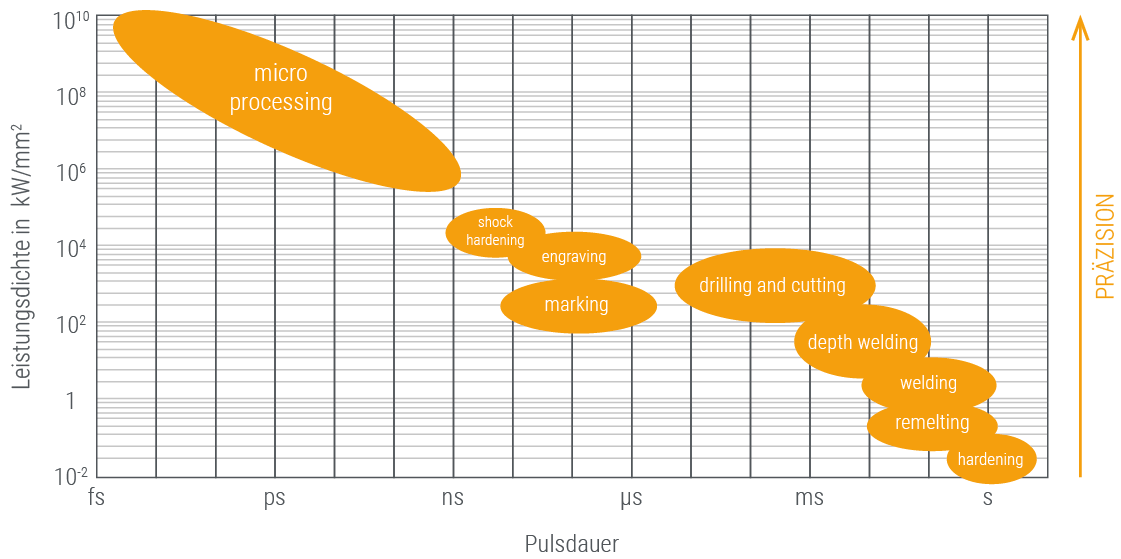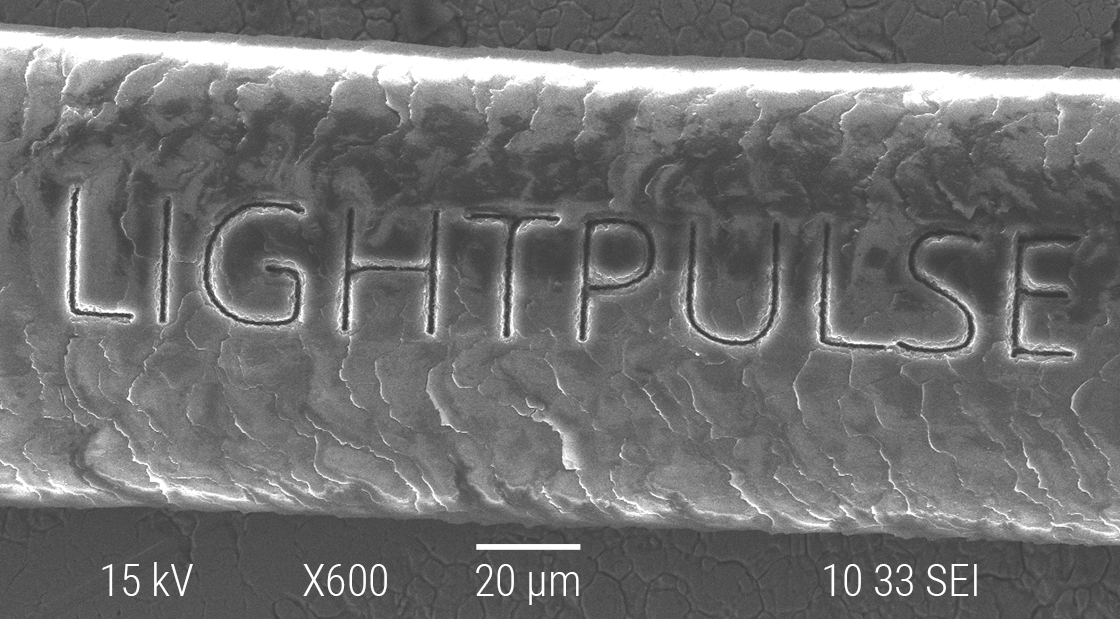Ultra-short pulse laser technology
By this time, lasers have established themselves in industrial material processing for a wide variety of applications. Essentially, the pulse duration defines the purpose of application here: while longer pulsed systems specifically provide heat for welding or hardening, a shortening of the pulse duration qualifies the laser for microprocessing processes.

Our machines use ultra-short pulse lasers, whose pulses last from a few picoseconds to a few hundred femtoseconds. This has two main advantages for material processing:
Due to this short time scale, unrivaled pulse peak powers in the gigawatt range are possible even with an average power of a few watts. No material can withstand this high energy, so that this tool can be used independently of the material. Besides metallic materials, even the toughest materials such as ceramics, glasses or diamonds can be processed effortlessly without any wear. In addition to metallic materials, even the hardest materials such as ceramics, glass or diamonds can be processed effortlessly without any wear.

Image: LightPulse LASER PRECISION
The second advantage of the extremely short pulses is that in this time range the material does not yet react thermally to the deposited energy. In contrast to longer-pulse systems, the material is not heated and melted here, but changes directly from the solid to the gaseous state by breaking electron bonds and vaporizes. This process is often referred to as “cold” removal and results in no or only marginal thermal influence on the remaining material and an undefined melt formation is avoided.
This process, known as sublimation, is an essential factor for the high precision in ultra-short pulse laser processing.
